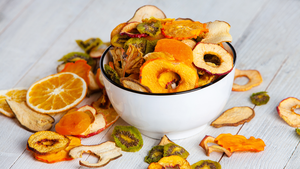How do consumers support limiting food waste?
There are myriad ways to go about limiting food waste. Which methods do consumers support, and how confident are they in their success?

Food waste in the U.S. and abroad has always plagued the industry. Every year, according to USDA, approximately 35% of the U.S. food supply is wasted. Not only does this mean otherwise good food is being wasted at the same time millions around the world live with hunger, it also means billions of dollars are wasted throughout the food supply chain each year.
Consumers are increasingly becoming aware of the issue of food loss, and by and large are in favor of adopting policies to address and reverse it. Recently, researchers at Penn State’s College of Agricultural Sciences sought to better understand not only how passionate consumers are about reversing food waste, but which specific methods they endorse and believe to be most successful (J. Cleaner Prod., Vol 330;2022[129907]).
For the study, an online survey was conducted of about 1,500 people meant to accurately represent U.S. demographics in regard to age, gender, race, income and education level. Additionally, all respondents were individuals responsible for at least 50% of his or her household’s shopping. Respondents were shown nine different potential solutions to food waste; these included:
Changes in food packaging
Changes in portion sizes
Standardization of date labeling terms
Selling imperfect produce in retail stores
Making donations easier
Using uneaten food to feed animals
Implementing composting in communities
Consumer education campaigns on food waste
Taxing food waste
Based on the responses, the researchers noted near-universal support of some food waste-reduction methods, and limited support for others. The most popular proposals were “Make food donations easier,” and “Standardization of date label terms,” each of which garnered support from more than 90% of the survey-takers; additionally, more than 80% believed such a proposal would ultimately be effective. Standardizing date labels would make it easier for consumers to understand when food truly has gone bad; according to head author Linlin Fan, Ph.D., terms like “Best by” and “Use by” are often conflated and confused by consumers, leading to food being thrown out before it becomes truly necessary.
Other popular proposals included “Use uneaten food to feed animals,” “Changes in food packaging,” and “Consumer education campaigns on food waste,” each of which had 80% or more of respondents in support. “Taxing food waste” was by far the least popular proposal; just 36% said they might or definitely would support it.
By asking respondents not only whether they support various measures, but also whether they believe such measures would ultimately be effective, Fan uncovered an interesting point of data.
“The percentage of respondents that considered each food waste solution to be effective was almost always less than the share of respondents who supported the solution,” she wrote. “Thus, it is important to be cautious about this divergence when assessing public opinion on potential solutions, which may be enacted as policies designed to mitigate food waste.”
That gap indicates more people support measures to reduce food waste than believe they will really work. Not only could that result in a slower adoption rate among consumers, it also indicates a relative lack of trust in the institutions meant to implement such changes. However, even skepticism about the effectiveness of various waste-cutting strategies hasn’t seemed to deter their concerns. One recent survey commissioned by Afresh Technologies indicated 60% of consumers are “extremely” or “very” worried about food waste, and another 36% at least “somewhat” concerned.
About the Author(s)
You May Also Like






